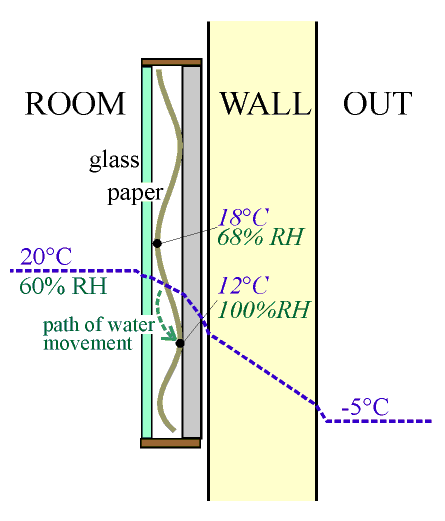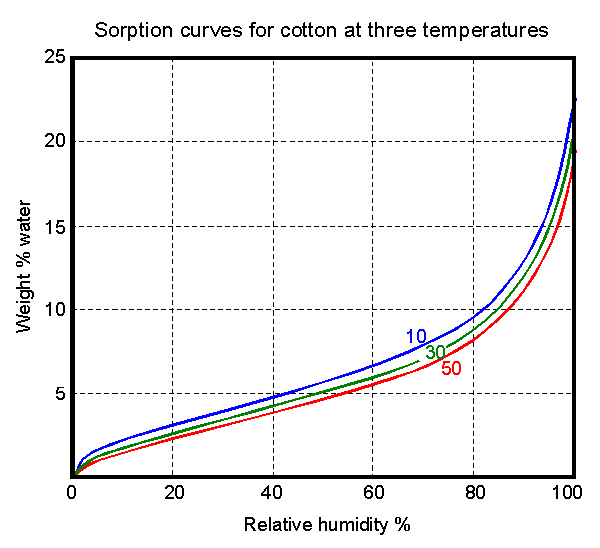
 |
The Hunt Ball - 5 |
The examples given so far involve processes that occur in a changing environment. It is also possible to provoke steady moisture movement in an environment with a permanent temperature gradient.
I illustrate this by considering the environment of a picture hung against the inside surface of an uninsulated outside wall.

The steady temperature gradient is the blue dotted line. The paper print has been tinted with watercolour so that it is now buckled. The high points touch the glass and the low points touch the impermeable back, of polystyrene channel plate, for example.
If the paper were not there, the climate within the enclosure would show an extreme RH gradient: from 68% at the inner surface of the glass to 100% at the surface of the backboard. The water vapour concentration is uniform throughout the enclosure, it is only the relative humidity that shows a steep gradient.
Paper is, however, a humidity buffer. Assume that the paper starts at equilibrium with the room climate. It will have a uniform water content of about 6.5% by weight.

The paper near the backboard will absorb water to about 20% by weight, reducing the RH at the back so that condensation does not now occur. The water vapour concentration close to the paper is now falling, so water vapour migrates through the air from the warm side of the enclosure. A lower RH therefore develops next to the glass. Paper is, however, a humidity buffer and therefore releases water vapour to the air. The result is that the paper becomes drier at the glass than at the backboard. Two opposite moisture gradients have developed: moisture is moving through the air towards the backboard, and is moving through the paper in the opposite direction. This reverse flow is relatively slow: the water molecules have to hop to vacant sites for hydrogen bonding to the cellulose molecules. This process requires activation energy and is therefore retarded at low temperature. The rate of diffusion through the air is, however, not so much influenced by temperature and is in any case much faster.
That is why mould appears in the troughs, where the water content is highest and the temperature is maybe a bit chilly but acceptable to many fungal and bacterial species.
Ah! You will say, but sometimes there is fungus growing where the paper touches the glass! To which I will suggest that you redraw the diagram to show the situation early on a spring day when the room is still cool but the sun is warming the wall.

This work is licensed under a Creative Commons Attribution-Noncommercial-No Derivative Works 3.0 License.